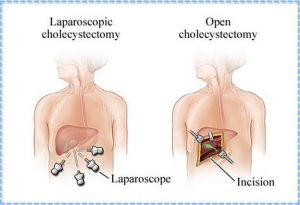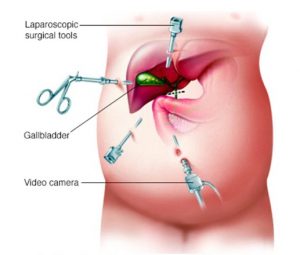Gallbladder is basically a place that stores bile generated by your liver as your body digests fats. It pushes bile into the common bile duct down to your small intestine to help digest them.
Gall stones form when the bile hardens into small pieces that block the common bile duct these stones can consist of calcium blood and cholesterol and they can cause moderate to severe pain along with nausea and/or vomiting. When this happens, it is called a gallbladder attack and gallbladder removal is the best treatment for gall stones.
Dr. Samrat Jankar is one of the best gastroenterologist in Pune. He’s especially known for is specialization of Laparoscopic Gastrointestinal surgery along with open surgery. His experience is the both laparoscopic and open gall bladder surgery. He along with his team have delivered hundreds of successful high-risk surgeries. Here we will talk about what you will go through if you have been recommended these types of surgeries.
It is essential that you find the right doctor for getting this procedure done. If you are someone who has been diagnosed with gall stones, or you need a second opinion then you can visit ClinicSpots to find the top gastroenterologists to treat you in major cities like Mumbai, Pune, Delhi, Chennai and many more.
There are two types gallbladder surgery usually performed:
- Open gallbladder surgery:
Open gallbladder surgery involves one large incision and remove all the gallbladder. This type of surgery causes more pain and longer recuperation with time.
- Laparoscopic cholecystectomy:
Laparoscopic cholecystectomy however is the most common and often the best method to remove a gallbladder. In this method the gallbladder is removed through several small cuts in your abdomen the surgery is safe and folks who have it normally recover within one week.
The laparoscopic method is not possible or when there are complications or too much scarring from previous surgeries are found or when the patient’s blood won’t clot
There are a number of benefits to having laparoscopic cholecystectomy among them you’ll be able to eat food without pain. In most cases it:
- eliminates any discomfort in the stomach lining
- in some cases it relieves your upset stomach
However, Dr. Samrat Jankar mentions that if you have your gallbladder removed you might experience chronic diarrhea, indigestion, trouble, digesting, severe liver problems fatigue and rare but intense abdominal pain
If the patient has been suffering from pretty severe gallstone pain so it is imperative that the doctor get his/her gallbladder out. The procedure is as follows:
- First the patient will be put under general anesthesia.
- Then trained nurses and specialists are going to make four small incisions one right below the bellybutton and three others right over the abdomen.
- Then they’ll disinfect the area where they’re going to make their first incision. With a scalpel the surgeon will make a small clean incision right below his bellybutton.
The surgeon has got to see where they’re going so they’ll first inflate the abdomen with the little carbon dioxide to have some room to work. Then the surgeon will use a laparoscopic camera to help see where they’re going.
- There it is I’ll take care of the other incisions for laparoscopic tools now that all of the trocars are in place can you move the liver out of the way using the clamps so we can get to the gallbladder.
- We should have plenty of room to work now before making any incisions into the gallbladder we’ll need to clamp off the bile duct in three locations
- Now using the scissors we’ll sever gallbladder, hold it in place while working to cut it from the liver we’ll use an electro Carter device to minimize bleeding fantastic looks, and lastly we’ll take out our clamp.
- Through the cut under the belly button, if the scope shows that everything’s clean, then the doctor will remove the gas.
Due to the use of laparoscopy, the patient is now in fast recovery and probably after a few hours the surgeon will approve his discharge. The patient will be able to go able to do his/her normal routine, but with proper adherence of doctor’s recommendations. The doctor also makes sure the patient can walk on his own before we let him go. As a side effect of the surgery, Dr. Samrat says that the patient will probably have a small amount of diarrhea and will probably be on a special diet to follow for a few days.








Comments